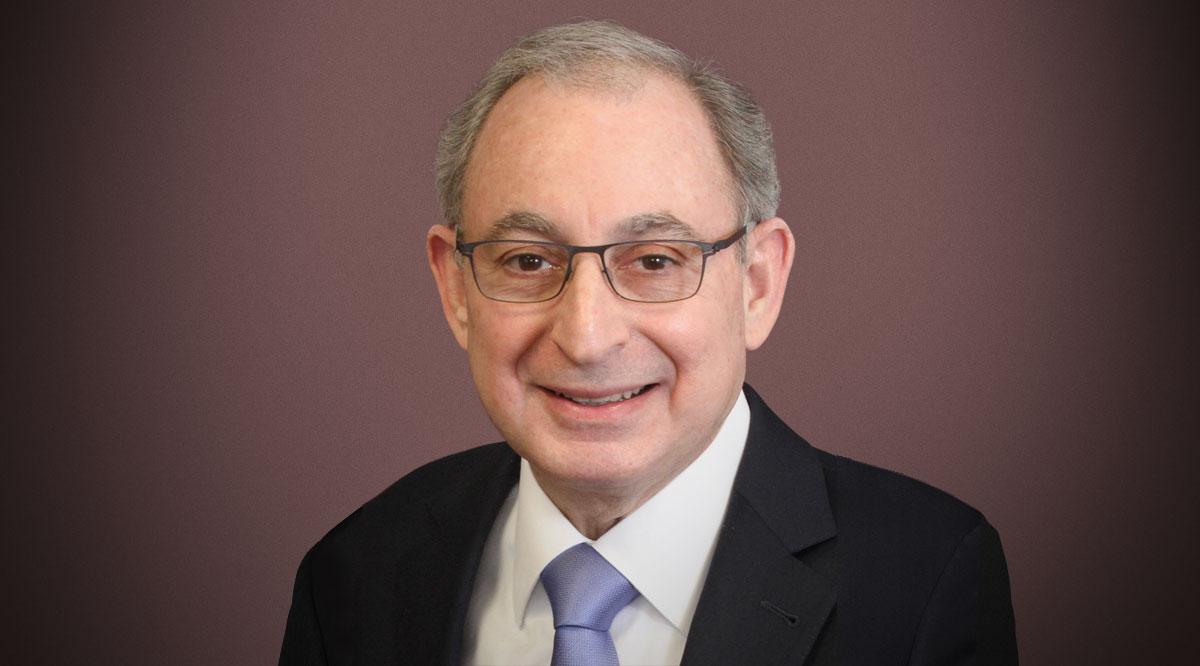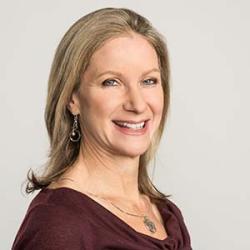Steven L. Kanter, MD, has never been one to shy away from a challenge.
Throughout his career — first as a neurosurgeon, then as a medical school dean, and more recently as the president and CEO of the Association of Academic Health Centers (AAHC) and Association of Academic Health Centers International (AAHCI) — Kanter has spearheaded efforts to improve and expand the reach of academic medicine, domestically and internationally.
In 2022, AAHC and AAHCI merged with the Association of American Medical Colleges (AAMC), with Kanter joining the team as a special advisor to AAMC President and CEO David J. Skorton, MD. Kanter also has continued to serve as executive director of AAHCI, a position he will hold until June 2024, when the work of the AAHC and AAHCI will fall under the purview of AAMC Chief Health Care Officer Jonathan B. Jaffery, MD.
“I am more convinced than ever that academic health centers can do more together than any one center can do alone,” Kanter says in reflecting both on the merger and his many years in academic medicine. “And, in fact, I would say that when academic health centers act collectively, there’s an exponential increase in their power to improve the human condition.”
“High-functioning academic health systems don’t just happen by accident,” Kanter adds. “It takes a lot of organization and work and commitment to develop them into these amazing places and I just think a critical part of that is working together.”
Kanter recently sat down with AAMCNews to discuss highlights from his long and distinguished career, including his most significant accomplishments while president and CEO of AAHC and AAHCI.
What initially led you to medicine and academic medicine, in particular?
As a child, I wanted to be a veterinarian. I was involved with dog training and I was really intrigued with how dogs learn and what their brains must be like. And that eventually led me to be interested in the human brain and in how we think. I wanted to know as much as possible about the human brain and how it worked, so that’s what led me to medicine and ultimately to neurosurgery.
After years of training and practice as a neurosurgeon in Florida and Texas, you became vice dean of the University of Pittsburgh School of Medicine, where you led a team to establish a new school in Kazakhstan. Can you talk a little about that?
I’m very grateful for the opportunities that I had to contribute to academic medicine and the leadership roles in both Pittsburgh and Kansas City. [Kanter later served as dean of the University of Missouri-Kansas City School of Medicine.] I loved working with students and residents and I’m still in touch with a number of former students who themselves are now in leadership roles, which is just a tremendous amount of fun. In Pittsburgh, I did the full gamut of things that happen in a medical school dean’s office, from putting in place a new curriculum to working on a whole variety of faculty issues, and more. As we established new and innovative programs, we were contacted by other places to see what we were doing, and why and how we were doing it.
Kazakhstan was at a very interesting point in its history, and they decided to develop one of their major universities as a western-style institution of higher learning. And they did that by engaging in partnerships with universities in the United States and in the United Kingdom and in other places. So for each school in the university, like the School of Business or the School of Arts and Sciences, they would partner with an entity in another country. For the School of Medicine, they approached the University of Pittsburgh. They knew about the work that we had done and the reputation we’d developed. So we agreed to engage in a collaborative project. I went to Kazakhstan, took a group of people with me, and we found a very committed group of individuals and very talented individuals who really cared deeply about the future of their country. This was a big deal, putting in place western-style education. A lot of their programs were Soviet-style education. So as we developed the project, I brought teams of physicians and scientists from Pittsburgh to Kazakhstan. And then I also brought teams of physicians and scientists from Kazakhstan back to Pittsburgh, so they could really see firsthand what a U.S.-style medical school was like, what the culture was like.
The first or second time I was [in Kazakhstan], I asked to see what they had of this medical school so far, and they drove me to a vacant lot. And now, today, on that lot, there’s a medical school that has graduated several classes of students. I also chaired the search committee for the new dean for their medical school, along with one of my colleagues from Pittsburgh, Dr. Maggie McDonald, and we identified this wonderful person, Dr. Massimo Pignatelli, who is still there as dean 10 years later. Massimo then became very involved in the Association of Academic Health Centers International. And so really, it has come full circle very, very nicely.
From Pittsburgh, you became dean of the University of Missouri-Kansas City School of Medicine. Can you tell me more about that?
I spent four years there and what’s interesting about Kansas City is that medical school is a six-year program where most of the students come straight out of high school. I noticed early on that there are a number of people who graduated from that medical school, who moved into significant leadership positions. And so we decided to study that and wrote a paper about that, which was published in Academic Medicine. It is a very successful model.
And then in 2018, you were recruited to become president and CEO of the AAHC and AAHCI. What do you think were your major accomplishments during your tenure there?
The most significant responsibility there was to lead the way forward in academic health by helping top leaders of academic health centers do their jobs better: run financially sound institutions while advancing the academic mission; taking good care of patients; improving the health of their communities; discovering new cures; and cultivating the next generation of physicians and scientists. We did a number of things to help top leaders do their jobs better. As an example, we identified early on that cybersecurity was a problem for academic health systems, so we very quickly put in place a number of initiatives, including an international study group. We also put together a very realistic simulation for top leaders. There are physician hackers out there — people who are physicians who study cybersecurity and how to help academic health centers and hospitals prevent cyberattacks. We had a couple of these individuals come to our annual meeting and put on a very realistic simulation. People again and again have told me how useful that was. We put together some other resources. There’s a document we call the key considerations document and the simulation was published in MedEdPORTAL, so others can access it and use it. That’s something we did where we were able to identify an emerging issue, jump on it early, and really help prepare leaders to deal with it.
You were also instrumental in acquiring the Sullivan Alliance, which has since moved over to the AAMC.
Diversity, equity, and inclusion have to be central values if we’re going to accomplish what we want to accomplish in academic medicine. The mission of the Sullivan Alliance is to strengthen the capacity and quality of the nation’s health workforce by increasing the numbers of ethnic and racial minorities in every area of health care and across all aspects of academic health centers. One of the really nice things about bringing it over to the AAMC, which historically has been charged with focusing on schools of medicine and teaching hospitals, is it increases the surface area for interacting across the health professions. And so I think it has even broader implications for what we can do to advance the goal of the Sullivan Alliance.
You also established a regional office in Eastern Africa.
I noticed that leaders of academic health centers from lower- and middle-income countries were not participating in our international events. And so I developed something we called the AAHCI Leadership Initiative or ALI. It provided opportunities for leaders of academic health centers in low- and middle-income countries to participate with international colleagues, and share best practices, share innovative solutions in a way that really wasn’t happening before we created that initiative. We started out by looking at Eastern Africa. We identified several institutions there and invited them to submit applications to ALI and we selected four institutions initially. They’ve been very active, and it’s really been wonderful to have those voices at the table. There’s so much learning that goes in all directions when you do something like that; it’s really important. When I started, we only had one member on the entire continent of Africa. So with this initiative, we ended up with five members and we’ve increased that even more since then. But that enabled us to start that regional office in Nairobi.
We also established a series of what we call Thought Leadership Panels or TLPs. We set them up during COVID-19 to identify and share innovations, breakthroughs, and also to share best practices very rapidly. And that turned out to be a really successful model of how a virtual meeting can have real value.
The merger of AAHC and AAHCI with the AAMC in 2022 was actually the third time that such a merger had been attempted. Can you provide some perspective on what made this third attempt successful?
If you look back over the last 20 years or so, academic health centers have been evolving very rapidly and it’s important for the associations that represent them to evolve just as rapidly. I think the merger helped catalyze that process and helped us think in new ways. An example might be that more and more of our members, more and more medical schools and academic health systems, are engaging in global partnerships in various ways. And almost all of them have programs in global health. So now that AAHCI is part of AAMC, the AAMC has a global mandate and is in sync with what members are doing in a very positive way.
I think also we are at a point in history where it’s just more important than ever before to speak with a unified voice. Whether it’s COVID or cybersecurity or health security more generally, it’s really critical that we band together, work together as closely as possible, as collaboratively as possible, and we need all voices at the table.

